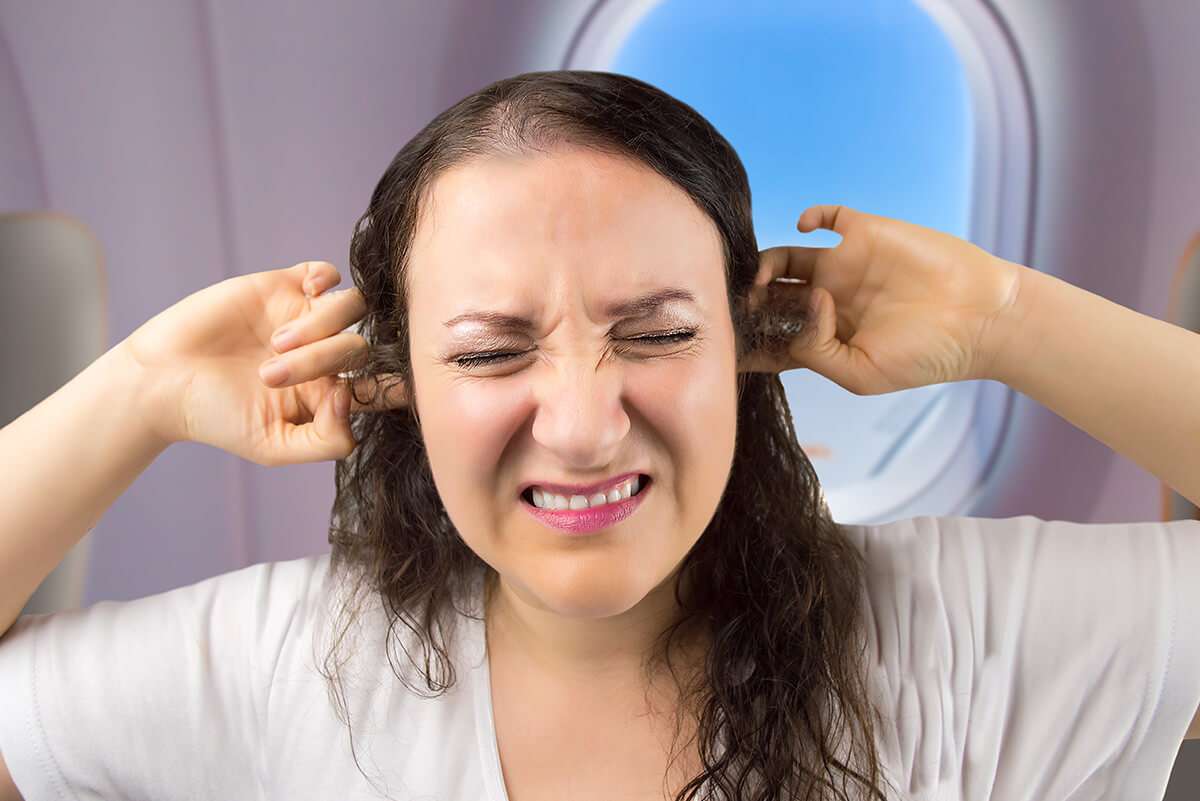Barotrauma (Airplane Ear)
Barotrauma is a condition caused by changes to the environmental pressure, whether water or air.

Barotrauma is a condition caused by changes to the environmental pressure, whether water or air. The most common form of barotrauma affects the ears during take-off and landing in an airplane, often called airplane ear. Barotrauma can also affect the sinuses and lungs when scuba diving, due to changes in surrounding water pressure.
Symptoms and Causes of Barotrauma
The air-filled spaces in the body, such as the eustachian tubes of the ear, the sinuses in the face and head, and the lungs, are balanced against the external pressure outside the body. Changes to external pressure affects the volume occupied by the gases of the air-filled spaces inside the body. When this external pressure changes too rapidly for the body to adjust, it can result in barotrauma.
Some people may be more prone to ear barotrauma. Children and infants can be at a higher risk of barotrauma due to the size and orientation of their eustachian tubes. Other conditions that affect the function of the eustachian tube and its ability to regulate pressure in the ear will also increase the risk of barotrauma. These conditions can include suffering from allergies, colds or other infections that cause congestion, abnormalities of the ear canal, and hormonal changes such as from pregnancy.
Possible symptoms of ear barotrauma include:
- A blocked, stuffy sensation of the ears
- Muffled hearing or hearing loss
- Ear pain, which can range from mild to severe
- Vertigo
- A ruptured eardrum
- Nausea and vomiting
- Disorientation
In most situations, such as during flight, the symptoms of barotrauma are mild and resolve soon after reaching a stable altitude or landing.
Treatment and Prevention of Barotrauma
Most situations of ear barotrauma will self-resolve without treatment. For faster relief, such as during a plane take-off or landing, you can try to equalize the pressure in your ears yourself through:
- Chewing gum
- Sucking on hard candy
- Yawning or stretching open your jaw
- Drinking water or swallowing a few times
If you know you are suffering with congestion from allergies or a cold, consider taking antihistamines or decongestants to manage your symptoms about an hour before your flight. There are also specially designed ear plugs available to help minimize the discomfort from changes in pressure during airplane flights.
In the infrequent case of severe barotrauma and persistent pain, your doctor may perform some tests. An otoscope is a handheld tool that allows your doctor to visually examine your eardrum, assessing for infections, which may require antibiotics, or perforation, which may require surgery. If necessary, they may also refer you for an MRI (magnetic resonance imaging) scan or hearing test.
If chronic or recurrent barotrauma is a concern, such as for those who need to fly often, an ENT (ear, nose, throat) surgeon can recommend the surgical insertion of grommets. Also known as tympanostomy tubes, these tiny pipes are designed to provide an alternative passage to the eustachian tubes for pressure to equalize in the ear. Grommets can usually be kept in place for 6 to 12 months.
Though it’s not common for there to be any lasting complications or damage after ear barotrauma, chronic and severe cases can result in hearing loss, recurrent ear infections, chronic vertigo, or persistent pain. If your symptoms of ear barotrauma are lasting longer than expected, see your family physician.
